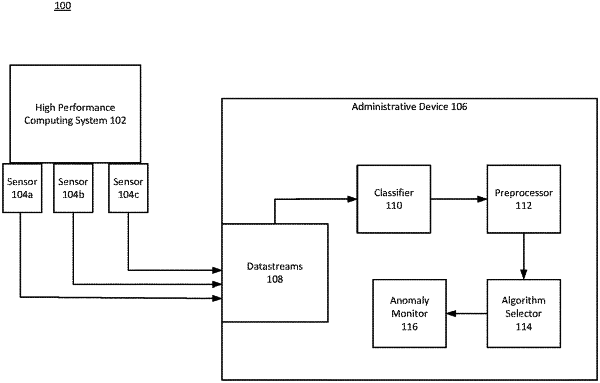| CPC H04L 63/1425 (2013.01) [H04L 43/04 (2013.01); H04L 43/062 (2013.01); H04L 43/065 (2013.01); H04L 43/0817 (2013.01); H04L 63/20 (2013.01)] | 20 Claims |

|
1. A device, comprising:
processing circuitry; and
a memory including instructions that, when executed on the processing circuitry, cause the device to:
receive a plurality of datastreams from a plurality of sensors of a high performance computing system;
classify, based on a plurality of time-series observations of each sensor of the plurality of sensors, each datastream to one of a plurality of datastream models;
select, for each datastream and based on a classification of each datastream, an anomaly detection algorithm from a plurality of anomaly detection algorithms;
determine parameters of each anomaly detection algorithm of the plurality of anomaly detection algorithms, based on at least one of: characteristics of each datastream and characteristics of the high performance computing system;
receive an anomaly score from each of the plurality of anomaly detection algorithms;
determine, for each datastream an anomaly threshold based on each anomaly score;
generate, when an anomaly score of the plurality of anomaly scores exceeds its respective anomaly threshold, an indication that the sensor associated with the respective datastream is acting anomalously.
|